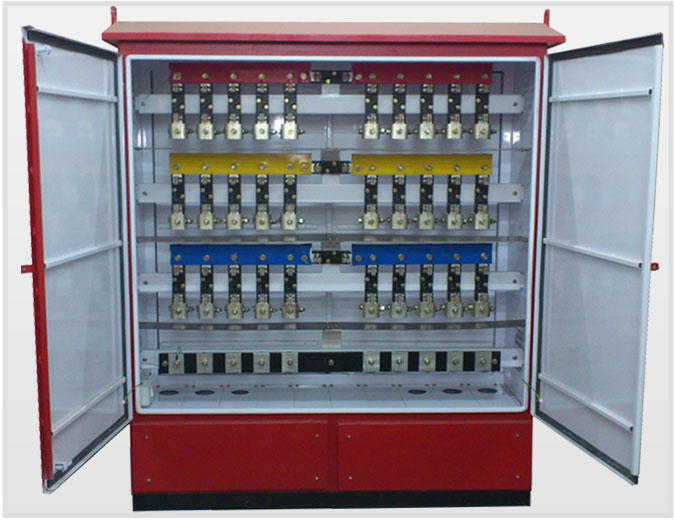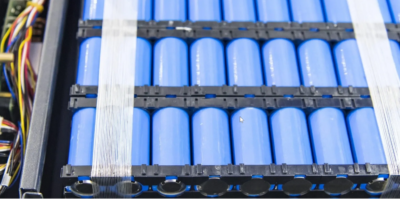Feeder and Distribution Pillar Market size was valued at USD 140.6 Million in 2023 and is expected to reach USD 197.48 Million by 2030 with a CAGR of 3.5% from 2024-2033
Executive Summary
The feeder and distribution pillar market plays a vital role in electricity distribution networks, serving as key components for the safe and efficient supply of electricity to residential, commercial, and industrial consumers. These pillars, also known as distribution cabinets or distribution boxes, house electrical equipment such as circuit breakers, fuses, and connectors, facilitating the distribution of power from the grid to individual consumers. This market overview will explore the introduction, historical developments, growth factors, working principles, key trends, and detailed analysis of the feeder and distribution pillar market.
Introduction
Feeder and distribution pillars are essential elements in electricity distribution systems, serving as connection points between the distribution network and end-users. They are typically installed in outdoor locations along streets, sidewalks, or within residential and commercial developments, providing a convenient and safe interface for accessing electricity. These pillars house distribution transformers, switchgear, and other components necessary for controlling and protecting the electrical distribution network.
Historical Developments and Opportunities
Historical Developments
- Early Distribution Infrastructure:
- The concept of feeder and distribution pillars emerged in the early 20th century with the expansion of electrical distribution networks in urban and rural areas.
- Standardization and Modernization:
- Over time, industry standards and regulations evolved, leading to the standardization of distribution pillar designs and the adoption of modern materials and construction techniques.
- Technological Advancements:
- Advances in electrical engineering and materials science have facilitated the development of more compact, efficient, and durable distribution pillars.
Opportunities
- Grid Modernization Initiatives:
- Government initiatives aimed at modernizing electrical grids to improve efficiency, reliability, and resilience present opportunities for the deployment of advanced feeder and distribution pillars.
- Smart Grid Integration:
- The integration of smart grid technologies, such as remote monitoring and control systems, into distribution networks creates demand for intelligent feeder and distribution pillars capable of supporting advanced functionalities.
- Urbanization and Infrastructure Development:
- Rapid urbanization and infrastructure development in emerging economies drive the expansion of electrical distribution networks, fueling the demand for feeder and distribution pillars.
Growth Factors
- Increasing Electricity Demand:
- Growing population and economic development drive the demand for electricity, necessitating the expansion and upgrading of distribution infrastructure, including feeder and distribution pillars.
- Grid Reliability and Resilience:
- Enhancing the reliability and resilience of electrical grids against disruptions, such as extreme weather events and cyber-attacks, requires robust distribution infrastructure supported by modern feeder and distribution pillars.
- Energy Transition:
- The transition towards renewable energy sources and decentralized power generation systems necessitates the integration of distributed energy resources (DERs) into the grid, driving the need for adaptable and interoperable distribution infrastructure.
- Technological Innovations:
- Innovations in materials, design, and manufacturing processes enable the development of more efficient, compact, and environmentally friendly feeder and distribution pillars.
Working Principles
Components and Functionality
- Transformer:
- Reduces voltage from the distribution network to levels suitable for end-user consumption.
- Switchgear:
- Controls the flow of electricity and protects the distribution network from overloads, short circuits, and other faults.
- Circuit Breakers:
- Automatically interrupt the flow of electricity in case of abnormal conditions, preventing damage to electrical equipment and ensuring safety.
- Fuses:
- Serve as overcurrent protection devices, melting or breaking the circuit when current exceeds a predetermined level.
- Connectors and Terminals:
- Provide interface points for connecting distribution cables and wires, facilitating electrical connections between the distribution network and end-users.
Receive the FREE Sample Report of Feeder and Distribution Pillar Market Research Insights @ https://stringentdatalytics.com/sample-request/feeder-and-distribution-pillar-market/14935/
Market Segmentations:
Global Feeder and Distribution Pillar Market: By Company
Al Salam Industrial & Trading Est
Charles Endirect
Emirates Transformers & Switchgear Limited
Federal Switchgear Limited
Hager Group
KEMCO Electrical Est
Qatar International Electrical Co
Schneider Electric
Techno Group
Verger Delporte UAE Limited
Global Feeder and Distribution Pillar Market: By Type
Single-Phase Feeder and Distribution Pillar
Three-Phase Feeder and Distribution Pillar
Global Feeder and Distribution Pillar Market: By Application
Smart Grid
Commercial Premises
Light Industrial
Outdoor and Indoor Power Delivery
Regional Analysis of Global Feeder and Distribution Pillar Market
All the regional segmentation has been studied based on recent and future trends, and the market is forecasted throughout the prediction period. The countries covered in the regional analysis of the Global Feeder and Distribution Pillar market report are U.S., Canada, and Mexico in North America, Germany, France, U.K., Russia, Italy, Spain, Turkey, Netherlands, Switzerland, Belgium, and Rest of Europe in Europe, Singapore, Malaysia, Australia, Thailand, Indonesia, Philippines, China, Japan, India, South Korea, Rest of Asia-Pacific (APAC) in the Asia-Pacific (APAC), Saudi Arabia, U.A.E, South Africa, Egypt, Israel, Rest of Middle East and Africa (MEA) as a part of Middle East and Africa (MEA), and Argentina, Brazil, and Rest of South America as part of South America.
Click to Purchase Feeder and Distribution Pillar Market Research Report @ https://stringentdatalytics.com/purchase/feeder-and-distribution-pillar-market/14935/?license=single
Key Trends and Analysis
- Smart Grid Integration:
- Trend: Increasing integration of feeder and distribution pillars with smart grid technologies for real-time monitoring, remote control, and data analytics.
- Impact: Improved grid efficiency, reliability, and response to changing demand patterns and grid conditions.
- Modular and Prefabricated Solutions:
- Trend: Adoption of modular and prefabricated feeder and distribution pillars for faster deployment, reduced installation costs, and greater flexibility.
- Impact: Streamlined installation processes, scalability, and customization options to meet specific project requirements.
- Energy Storage Integration:
- Trend: Integration of energy storage systems with feeder and distribution pillars to support grid stability, peak shaving, and renewable energy integration.
- Impact: Enhanced grid resilience, reduced reliance on centralized generation, and optimized utilization of distributed energy resources.
- Environmental Sustainability:
- Trend: Growing emphasis on environmental sustainability drives the adoption of eco-friendly materials, energy-efficient components, and recyclable designs in feeder and distribution pillars.
- Impact: Reduced environmental footprint, compliance with regulatory requirements, and alignment with corporate sustainability goals.
About Stringent Datalytics
Stringent Datalytics offers both custom and syndicated market research reports. Custom market research reports are tailored to a specific client’s needs and requirements. These reports provide unique insights into a particular industry or market segment and can help businesses make informed decisions about their strategies and operations.
Syndicated market research reports, on the other hand, are pre-existing reports that are available for purchase by multiple clients. These reports are often produced on a regular basis, such as annually or quarterly, and cover a broad range of industries and market segments. Syndicated reports provide clients with insights into industry trends, market sizes, and competitive landscapes. By offering both custom and syndicated reports, Stringent Datalytics can provide clients with a range of market research solutions that can be customized to their specific needs.
Reach US
Stringent Datalytics
+1 346 666 6655
Social Channels:




Leave a Reply